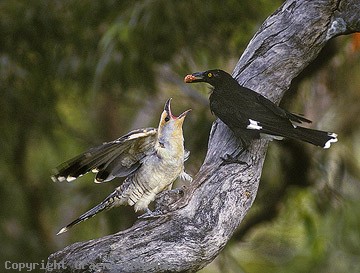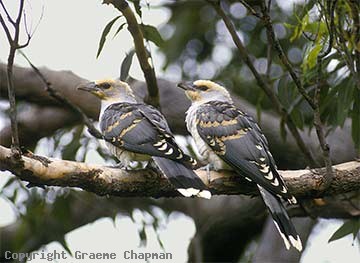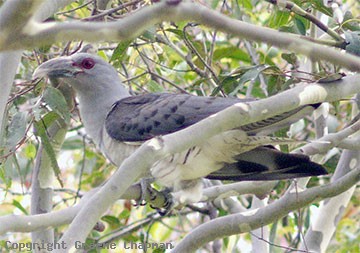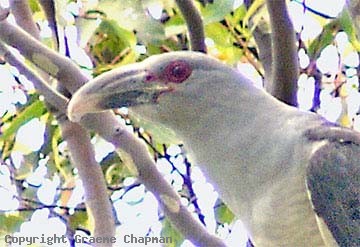Australian Birds
Channel-billed Cuckoo
Scythrops novaehollandiae
(Viewing 4 of 6 photos)
|

Channel-billed Cuckoos are our largest (by far) cuckoo. Their wingspan is not much different to their total length so that when viewed from below they look like a huge flying cross, usually a noisy one as well! They are migratory and arrive from New Guinea and islands to the north between August (in northern Australia) or as late as October in the south-east. They parasitise a range of species - ravens and crows, magpies, Magpie-larks and Pied Currawongs in particular. Sometimes more than one egg is laid in the host's nest, possibly by more than one cuckoo. Channel-bills feed on a variety of fruit, figs are a favourite, and large insects such as stick insects obtained high in the tree canopies. They also take the occasional eggs and nestlings, possibly to force the owners to nest again and become a host. When breeding they occur in pairs which later on form small groups. They leave in Feb-March and there are reports of flocks of 50 or so gathered on the coast at Cape York preparatory to crossing Torres Strait.
|

348201 ... Fledgling begging to foster parent, a Pied Currawong. |

348202 ... Two fledgling Channel-billed Cuckoos raised by a pair of Pied Currawongs. |
 |

348203-D ... This adult was feeding in the canopies of Spotted Gums on large stick insects (phasmids) near Nowra NSW Dec 2007. |

348204-D ... Our biggest true cuckoo (up to 65 cm long) has a seriously large bill! This is a male. |
 |
Previous 1 2 Next
Return to Photo Library page




